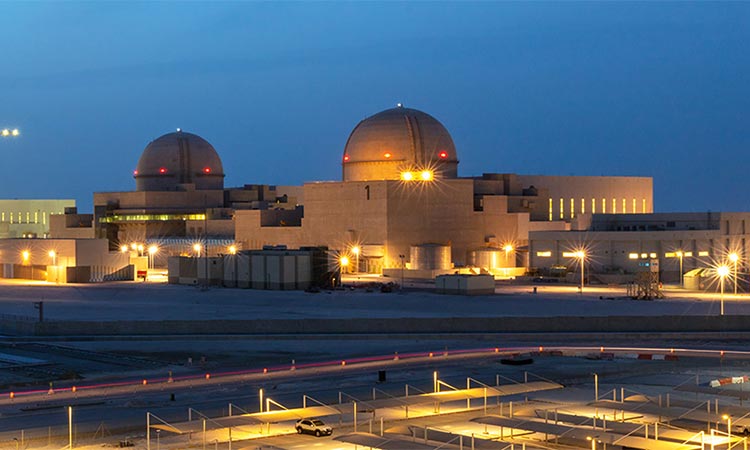The only thing worse than talking about a nuclear-powered future, is not talking about one.
Australians watching power prices go through the roof and suffering through power rationing during summer – thanks to the hopeless intermittency of wind and solar – are finally getting the message. Given the unrelenting attack on reliable coal-fired power, the only way to salvage Australia’s (once reliable) power supply is to start building nuclear power plants. Right now.
The end-is-nigh crowd continues to rail about human-generated carbon dioxide gas emissions, but (with a few rare exceptions) either reject nuclear power out of hand or simply ignore it, hoping it might go away.
Among those rare exceptions is Zion Lights, who helped orchestrate the Extinction Rebellion charge across London back in 2019.
Lights had her road to Damascus moment not long after the protests, recognising that the reactionary rhetoric she helped deliver was high on emotion and thoroughly thin on evidence.
Unlike her fellow travellers, Ms Lights wasn’t apparently keen on destroying Western civilisation, by first destroying its energy supplies. Instead, she has become a passionate advocate for ever-reliable nuclear power.
Savvy activists cast nuclear benefits in a fresh green light
The Australian
Claire Lehmann
5 July 2021
At the height of Extinction Rebellion’s protests in London in 2019, spokeswoman Zion Lights appeared on the BBC in an interview with veteran journalist Andrew Neil. Under the hot glare of studio lamps, Lights was grilled about her group’s claims. Specifically, Neil wanted to know whether she could defend the argument that six billion people were likely to die this century because of climate change.
Lights faltered and was unable to give a convincing reply. Later, she confessed it was because she knew the claim to be wrong. Not long after this interview, Lights left Extinction Rebellion, citing overly alarmist rhetoric as one of the reasons for her departure. Despite this, she remains passionate about mitigating climate change and has since started her own organisation, Emergency Reactor, which emphasises nuclear power as a clean and safe form of energy.
Disenchanted with traditional environmentalism, Lights is one of a handful of leaders navigating a new path in this arena. Michael Shellenberger, author of Apocalypse Never: Why Environmental Alarmism Hurts Us All, is another. These figures are not associated with green political parties and do not seek to tear down “the system” or to profit from investments made in renewable technologies. Their orientation is pragmatic: they wish to see the world make the transition from dirty sources of energy to clean as quickly and as safely as possible. And nuclear energy is seen as a critical part of that transition.
Surprisingly, this position appears to be a minority stance among green activists.
To understand why it is unusual for environmental activists to advocate for nuclear energy, one has to go back to the movement’s origins. Long before climate change was on the radar, the threat of nuclear war and the fear of nuclear energy had galvanised progressives. By the mid-1970s the anti-nuclear movement had gained traction, with huge protests successfully closing down nuclear plants in Spain, France, Germany, The Philippines, Italy, the US and the Soviet Union. In 1985, 350,000 people marched in Australia in support of the anti-nuclear agenda. It was out of these protests that many modern-day green parties were born.
For baby boomers, nuclear weapons and nuclear energy were conflated as an existential risk that could wipe out humanity. While the danger of nuclear armament during the Cold War was real, the risks posed by nuclear power plants were needlessly inflated, creating an irrational fear that persists today.
This is not to say there are no risks associated with nuclear energy. When the Chernobyl reactor exploded in 1986, two operating staff were killed and 134 station staff and firefighters were hospitalised with acute radiation syndrome. Of these 134 staff, 28 later died, and 14 died of suspected radiation-related cancer in the following decade. These deaths were tragic and preventable, and the Chernobyl explosion should never have happened (the explosion occurred during a faulty safety test). But while it was predicted that thousands would die from subsequent radiation, present research indicates fewer than 100 deaths can be attributed to exposure to radiation caused by the accident.
At Fukushima in 2011, the second worst nuclear power plant disaster to occur in civilian history, one person died from cancer attributable to radiation exposure while two workers were taken to hospital with radiation burns. Sixteen more were hospitalised with injuries related to hydrogen explosions.
While these disasters were tragic and shocking, the scale of these fatalities pales in comparison with those caused by fossil fuels every year. The dirty energy that continues to power most of the world doesn’t just release carbon into the atmosphere, it also diminishes air quality through releasing fine particulate matter that makes people sick. One study from Harvard University has estimated eight million people globally died from air pollution in 2018 and that air pollution caused by burning coal and diesel was responsible for one in five deaths worldwide.
Fear of radioactive waste also has plagued a generation of green activists. But while it is true high-level radioactive waste does require painstaking regulation and processing, the fact nuclear energy is so dense means only a small amount of waste is produced in comparison with the vast amount of energy generated.
In France, where 75 per cent of the nation’s electricity is produced by nuclear power plants, the annual per capita amount of radioactive waste generated is 1kg (of which only 11g is “high level” waste), compared with 2500kg of industrial waste (of which 100kg is toxic).
For baby boomers, opposing nuclear arms and nuclear power go hand-in-hand. These positions have been linked inextricably because nuclear power has been feared for its potential to produce pollution. Yet solar panels generate less energy and discarded panels cause pollution.
The problem with the traditional approach to environmentalism has been its ideological confusion and lack of tangible achievements. On the one hand green activists call for clean energy to replace fossil fuels and with the other they oppose nuclear power. In their position statement last year, the Australian Greens explicitly oppose nuclear power in all its forms.
When the Indian Point nuclear plant in the US was shut down recently, the power generated by the plant was replaced by power generated from natural gas, a fossil fuel source that emits more pollution, not less.
With this muddle of priorities, is it any real surprise that no real progress in reducing carbon emissions has been made? As Lights recently pointed out on social media, if baby boomers had not spent decades getting nuclear power plants shut down, the world would be much closer to being carbon neutral.
The Australian



The most important fact about today’s environmental movement, and the book “Clean Energy Exploitations” explores is that the healthy and wealthy countries of the United States of America, Germany, the UK, and Australia representing 6 percent of the world’s population 505 million vs 7.8 billion) could literally shut down, and cease to exist, and the opposite of what you have been told and believe will take place.
Simply put, in these healthy and wealthy countries, every person, animal, or anything that causes emissions to harmfully rise could vanish off the face of the earth; or even die off, and global emissions will still explode in the coming years and decades ahead over the population and economic growth of China, India, Indonesia, Japan, Vietnam, and Africa.
China (1.4 Billion), India (1.36 billion), Indonesia (270 million), Japan (126 million) and Vietnam (80 million) plan to build more than 600 coal power units, and African countries (1.2 Billion) are planning to build more than 1,250 new coal and gas-fired power plants by 2030.
The book “Clean Energy Exploitations” helps citizens attain a better understanding that just for the opportunity to generate intermittent electricity that is dependent on favorable weather conditions, the wealthier and healthier countries like Germany, Australia, Britain, and America continue to exploit the most vulnerable people and environments of the world today.
The healthier and wealthier countries fail to recognize that at least 80 percent of humanity, or more than 6 billion in this world are living on less than $10 a day, and billions living with little to no access to electricity, These poor folks need abundant, affordable, reliable, scalable, and flexible electricity while The healthier and wealthier are pursuing the most expensive ways to generate intermittent electricity from breezes and sunshine.
I agree if you feel we need to save the world from the demon gas CO2 then nuclear is the way to go. But just be aware that in the event of a war those nuclear plants would be a prime target with the resulting release of massive amounts of radioactivity, thus the enemy could use conventional weapons to achieve the same result as nuclear weapons. Where as a coal plants would simply blow up and stop working.
Read “Merchants Of Despair” by nuclear PhD engineer Robert Zubrin.
At least China knows better — they actually follow climate science which says more CO2 is good for the earth and nuclear is clean and dependable … https://www.youtube.com/watch?v=b1Iu9D5RhqQ